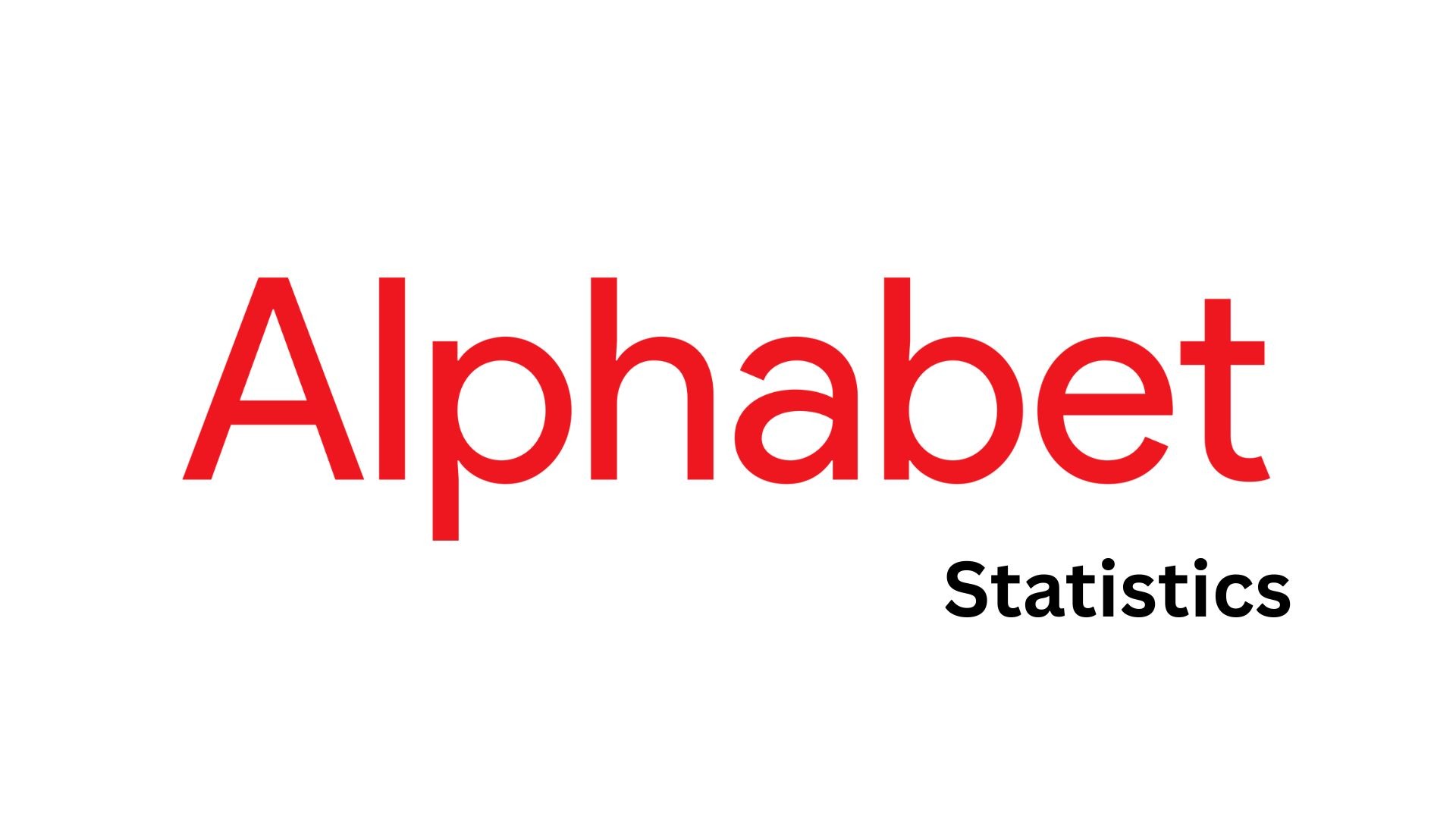Zoom vs Google Meet Statistics – Which One to Choose? (2025)
Updated · Jun 11, 2025
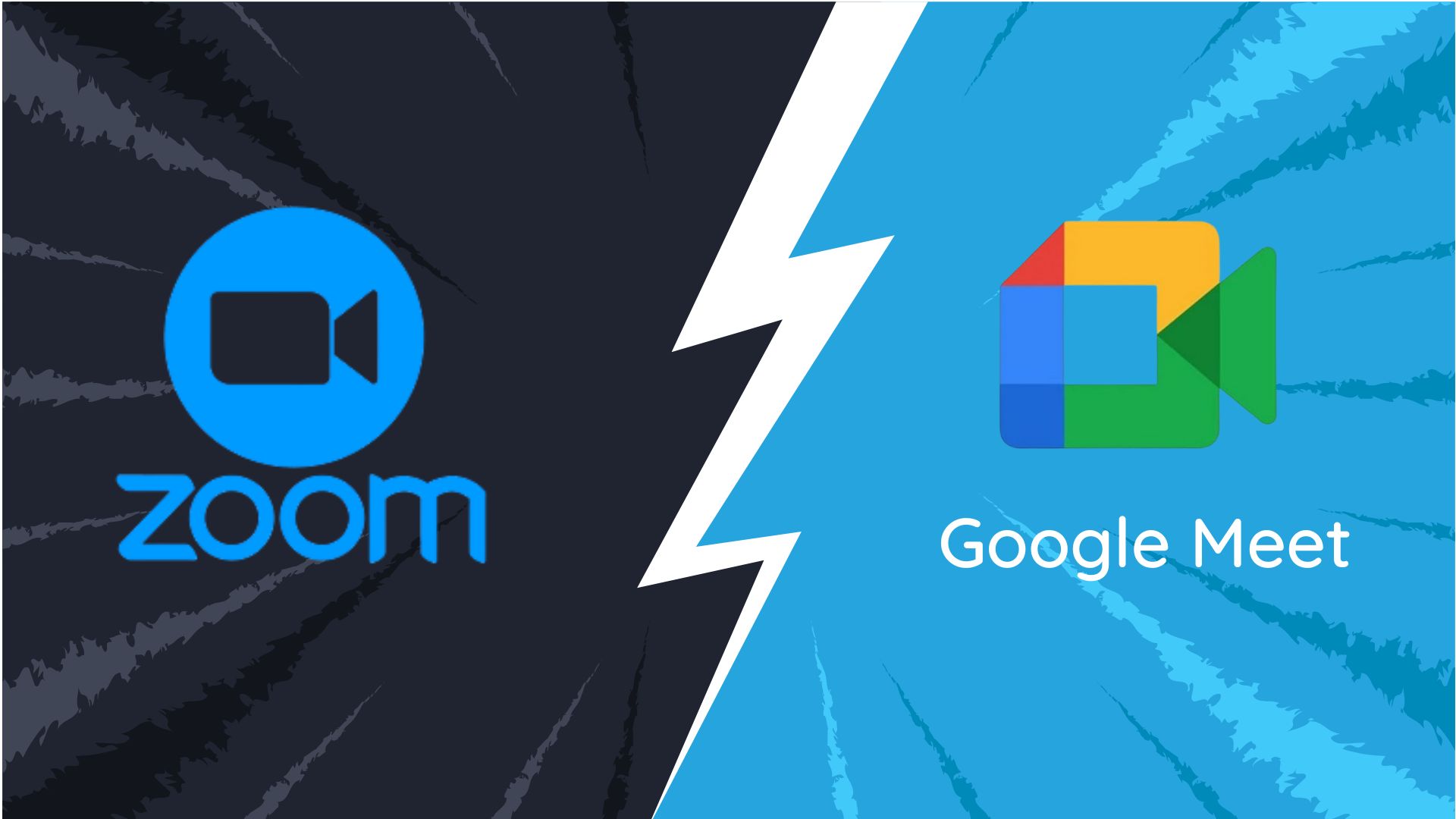
Table of Contents
- Introduction
- Editor’s Choice
- Zoom, Microsoft Teams, And Google Meet – Cumulative App Installs
- Videoconferencing App Market Share
- Comparing The Value Of Google Meet vs Zoom
- Zoom vs Google Meet Usage
- Zoom vs Google Meet App Downloads
- Zoom vs Google Meet Growth Outlook
- Zoom vs Google Meet Video Quality
- Conclusion
Introduction
Zoom vs Google Meet Statistics: In 2024, Zoom and Google Meet remain two of the most widely used video conferencing platforms worldwide. Organisations, educators, and individuals rely upon these tools for meetings, classes, and social interactions.
The article gives an in-depth look at Zoom vs Google Meet statistics that bring to light usage trends, market share, differences in features, and user growth, revenue, and pricing information—all presented in layman’s terms.
Editor’s Choice
- Zoom, Microsoft Teams, and Google Meet practically racked up nearly 200 million mobile downloads in Q2 2021, a drop of over 58% compared to 479 million in Q2 2020, indicating a slowdown in app installs post-pandemic.
- Zoom, holding the dominant global videoconferencing market share of 55.91% in 2024, showed a much stronger presence against Google Meet with a mere 5.52%.
- Google Meet is cheaper if one is paying for Google Workspace; Zoom’s Pro plan costs about US$12.50/month, a little more than the €10/month taken by Google Meet for premium features such as recording.
- Zoom was the choice of 71% of the professional respondents, against 44% opting for Google Meet; on the other hand, a majority, about 62%, of students preferred Google Meet to Zoom, with 38% favouring the latter. This indicates that user preferences are divided among key audience groups.
- Zoom is preferred by healthcare providers: 49% use it for consults, while 13% using Teams fare significantly lower; Google Meet, meanwhile, does not figure in the top platforms in this industry.
- Global ranks feature six-point-two-three million downloads for July 2024 via Google Meet, whereas in Q2 2020, Zoom had experienced a massive spike in its downloads, reaching 331.32 million, followed in 2023 by a tapering off to ranges between 37 million and 43 million per quarter.
- Zoom estimates US$4.79 billion to US$ 4.80 billion in revenues for FY 2025, with Q4 operating margin inching higher at 39.5%, compared to 38.7% a year ago, all the while keeping original innovations in AI for user experiences.
- Enterprise demand for video tools remains strong in North America and EMEA, with large institutions paying roughly US$242,000 yearly on average for video conference software.
- Zoom has recording capabilities that even extend for use with the free plan (up to 40 minutes), and unlike Google Meet, Zoom performed video quality tests, which recorded a 720p resolution, 25 fps, and 2.5 Mbit/s bitrate, acceptable standards above Google Meet’s 720p at 24 fps and 0.8 Mbit/s bitrate.
- Google Meet allowed 1080p for some cases from February 2024, but given the relatively higher Zoom bitrate, video resolution remains clearer in most recording scenarios.
Zoom, Microsoft Teams, And Google Meet – Cumulative App Installs
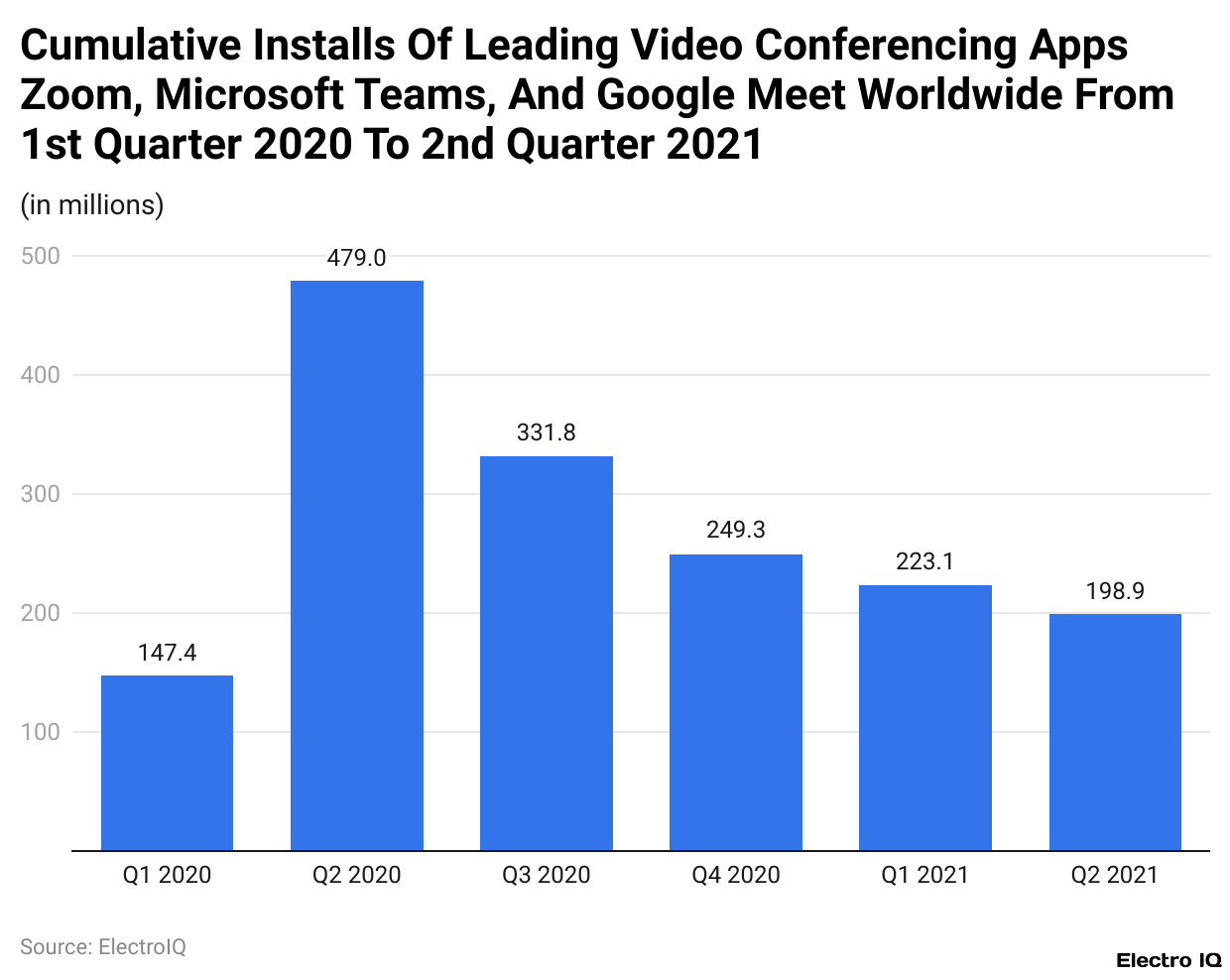
(Reference: statista.com)
- Between April and June of 2021, combined mobile downloads of Zoom, Microsoft Teams, and Google Meet nearly touched the 200 million mark worldwide.
- There was a tremendous shrinkage from around 479 million downloads in the second quarter of 2020, when these three video conferencing apps witnessed a mad rush of downloads.
- The drop of more than 58% suggests a behavioural shift among users, probably indicating that the initial boom in demand at the start of the pandemic was now waning.
- As users adjusted to alternative working and socialising arrangements, the imperative to charge video conferencing apps on mobile devices diminished.
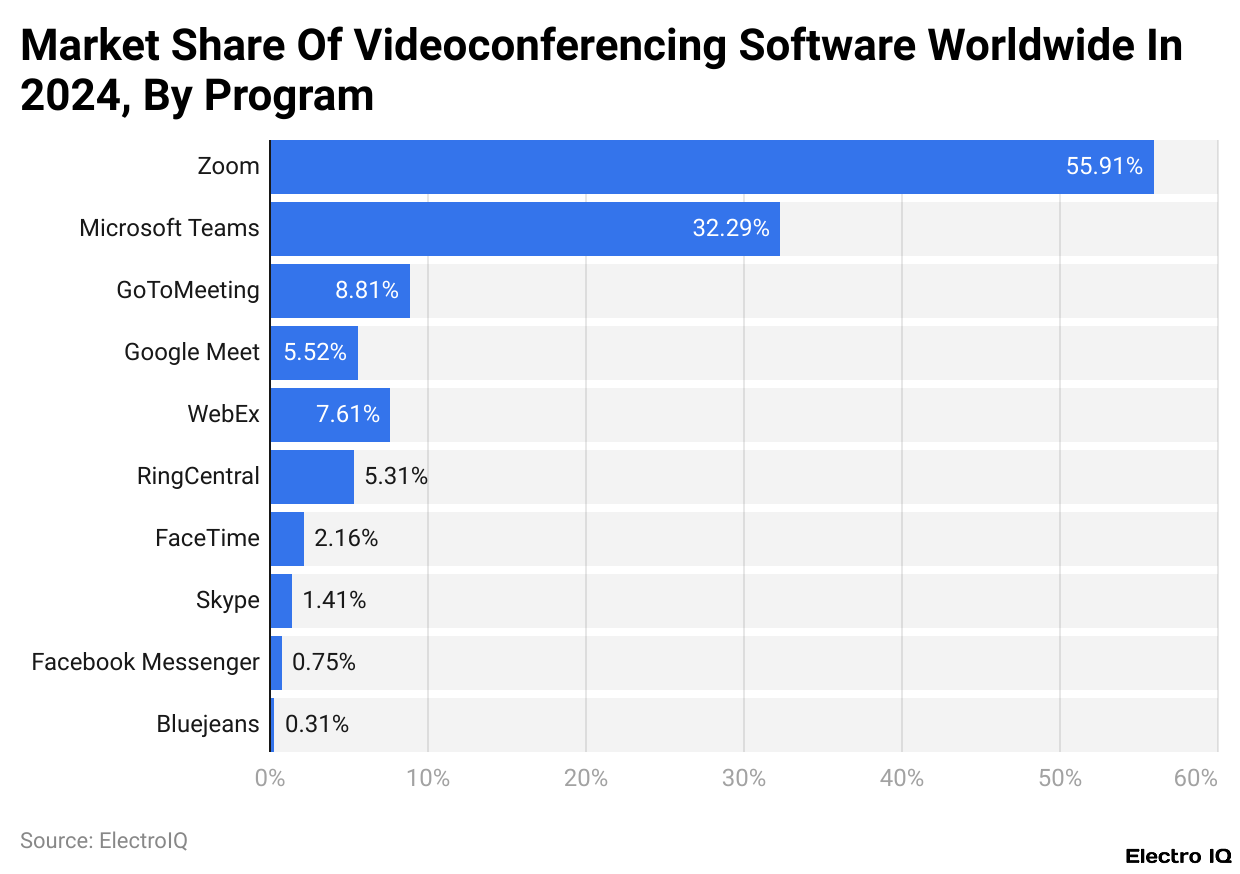
(Reference: coolest-gadgets.com)
- Video-conferencing software had cemented roughly 66 % of global market penetration rate, which basically implies that two-thirds of the global digital communications market remained at least partly touched by these tools, as per a Statista report of 2024.
- Zoom remained the Monaco-Level player around 55.91 %. Microsoft Teams came in second, 32.29% of the market, its own, with a less dominant level of usage than the former.
- The remaining competitors shared smaller Baldwins: GoToMeeting at 8.81%, Google Meet at 5.52%, and Webex at 7.61%.
- Others listed included RingCentral at 5.31%, FaceTime at 2.16%, Skype at 1.41%, Facebook Messenger at 0.75%, and Bluejeans at 0.31%.
- That explains how Elzo and Misros tithe on the lion’s share while the rest of the platforms share the tiny %ages.
Comparing The Value Of Google Meet vs Zoom
- As per Lark, Zoom vs Google Meet statistics, in terms of value, Google Meet tends to be the cheaper option, especially for customers already subscribing to Google Workspace.
- While Meet costs US$12 for one user per month in order to access extra features such as recording meetings, the same could be said of Zoom’s Pro plan, which is about US$12.50 for a single user when billed annually.
- These upgraded Meet features come included for users who are already paying for Google Workspace for services like Gmail, Drive, Docs, or Sheets, making this option much more economical.
- Afforded low pricing and high functionality, however, Google Workspace is far from perfect. It consists of separate tools such as Gmail, Google Chat, Meet, Docs, and Sheets, among others, that were integrated at a later time.
- Therefore, this manifests into a rather fragmented user experience. In contrast, Lark is designed as a cohesive platform to encourage collaboration.
- There is just one mobile app to use all chat, video meetings, documents, cloud storage, and productivity tools.
Zoom vs Google Meet Usage
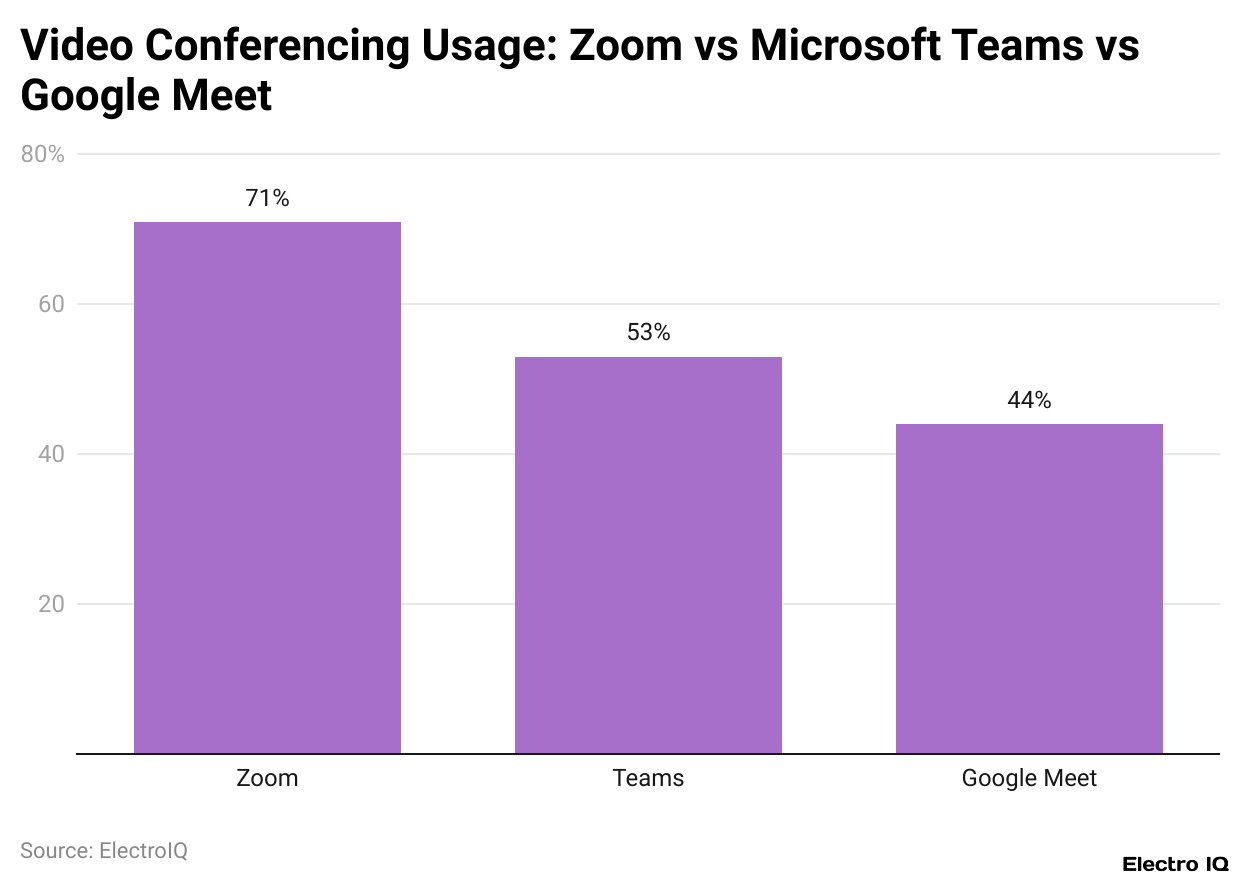
(Reference: zebracat.ai)
- According to Zebracat’s survey, Zoom is reported to be the most popular video conferencing tool for professional use, with 71% who say they use it compared to 53% for Microsoft Teams and 44% for Google Meet.
- Preferences, however, turn upside down when schools are in the picture, with 62% of students favouring Google Meet for classes and a mere 38% tracking regular use of Zoom in an academic setup.
- Microsoft Teams is the premium internal communications platform in the corporate world, especially among mid-to-large enterprises, with 59 % of organisations using the platform for the stated purpose.
- Skype’s usability has declined a lot in Video Conferencing, comprising only 8 % of activity across all user classes.
- In a stark contrast to Zoom’s proffered image as a warm telehealth service, it still entertains some serious competition in the telehealth sector: 49 % of providers are conducting consultations on the Zoom platform, with 27 % on Doxy.me and 13 % on Microsoft Teams.
Zoom vs Google Meet App Downloads
Zoom

(Reference: backlinko.com)
Google Meet

(Reference: statista.com)
- In July 2024, YouTube and its approximately 13.65 million iOS and Google Play downloads led the app charts. Closely behind was YouTube Kids with over 12.22 million downloads worldwide.
- Popular navigation application Google Maps took the third spot with approximately 11.9 million downloads.
- In the top ranks during that period was also Google Meet with 6.23 million downloads, demonstrating the continuing force of competition within the video conferencing space.
- Looking at past statistics for Zoom app downloads, we see that there was an explosive growth in Q1 and Q2 of 2020.
- Downloads went from just under 8 million in Q4 2019 to a whopping 116.14 million in Q1 2020 and then peaked at 331.32 million in Q2 2020 at a time the demand for remote working and virtual meetings could not have been higher as the world was on lockdown owing to COVID-19. Yet, after that, the momentum has been dying down over the following quarters.
- Data shows that downloads dropped to 162.61 million in the third quarter of 2020, reaching 130.19 million in the final quarter of 2020. This downward trend carried on in 2021 and 2022, with downloads pegged at just 56.65 million in Q4 2021 and reduced substantially to 39.18 million in Q4 2022.
- In 2023, numbers seemed to find some stability, hovering between 37 million and 43 million downloads every quarter. This whole-picture trend infers post-pandemic normalising of remote communication tools where initial spikes gasped down to somewhat sustainable lower usage patterns.
Zoom vs Google Meet Growth Outlook
- According to projections by Zoom, total revenues for fiscal year 2025 will range between 4.79 billion and 4.8 billion dollars, a tiny bit below expectations of analysts, as per sources such as Zapier and Barron’s.
- Despite the underwhelming revenue projection, Zoom still pours a heavy investment into artificial intelligence.
- It had an operating margin of 39.5% in the fourth quarter of fiscal year 2025, a slight improvement from 38.7% in the same quarter the previous year, showing the company had moved towards a more efficient and profitable position, as per reports from Barron’s and Investopedia.
- Meanwhile, Google Meet remains tightly integrated within the Google Workspace suite and continues to be enhanced with features such as low-light video filters, real-time captions, and AR effects designed to improve the user experience, as noted on Wikipedia.
- Hybrid working continues to be a powerful driver for video conferencing tools. This trend is quite prominent in North America and the EMEA (Europe, Middle East, and Africa) regions.
- Large enterprises keep pouring huge funds into communication platforms, with their average amount for video conferencing tools nearing US$242,000 per company per year.
- That shows the unwavering relevance of these online communication platforms in business operations today.
Zoom vs Google Meet Video Quality
- According to Joffrey.Video, Zoom vs Google Meet statistics show that the two ended up revealing the difference between video recording features and quality. Google Meet has recording as a premium feature starting at €10 per user monthly, whereas Zoom allows recording even in the free version, but with a 40-minute cap on meetings.
- As for video quality, Google Meet is recorded with 720p resolution and 24fps at a very low bitrate of just 0.8 Mbit/s, whereas, from February 2024 onward, at least under certain conditions, 1080p was made available on Google Meet.
- Zoom, in contrast, records at 720p with a slightly higher frame rate of 25fps and a much higher bitrate of 2.5 Mbit/s, resulting in clearer and more detailed recordings.
- Both maintain adaptive performance based on Internet and hardware capacities, but Zoom’s higher bitrate facilitates better video clarity.
- Furthermore, Zoom is building on this foundation of video conferencing with AI-powered features designed to help make meetings more productive and engaging for users, in line with hybrid work cultures.
Conclusion
Zoom vs Google Meet statistics: Presently, as of 2024, the video conferencing market belongs to Zoom, where it remains the leader. The strong host controls, scalability, and Zoom IQ AI assistant have made it an attractive platform for big enterprises and educators. Google Meet has the advantage of being in convenient integration with Google Workspace, low-cost plans, and appeal to small teams or organisations already in Google’s ecosystem.
Zoom is feature-rich and bandwidth-heavy, whereas Meet is more about simplicity and integration. Anyone looking for a mixture of advanced features and enterprise readiness would have to choose Zoom. Those looking for an affordable, easy-to-use, and Workspace-integrated application will do well with Google Meet.
FAQ.
Zoom has a lot bigger market share of 55.91% worldwide, while Google Meet scores just 5.52%, putting Zoom in the leading position in the video-conferencing market.
Google Meet is more cost-effective for users of Google Workspace since advanced features like recording come free with it. Zoom goes a little higher, charging US$12.50 per month for the Pro plan, whereas Google Meet’s paid plan starts around €10 per month.
Zoom is the favourite of professionals, with 71% of them preferring it over Google Meet at 44%. Among students, however, 62% side with Google Meet for classes as opposed to 38% who regularly use Zoom in academic settings.
Zoom supposedly has better video quality at 720p, 25fps, and 2.5 Mbits/s, even in its free version (albeit for a maximum of 40 minutes). Google Meet, being the 720p, will do 24 fps but will also have a bitrate of just 0.8 Mbits/s, while 1080p is available on selected conditions for paid plans.
Zoom enjoyed a major spike in downloads of about 331.32 million in the second quarter of 2020, but now more or less averages in the range of 37-43 million per quarter in 2023. Google Meet broke records with 6.23 million downloads worldwide during July 2024, indicating still-poor interest in it.

Maitrayee Dey has a background in Electrical Engineering and has worked in various technical roles before transitioning to writing. Specializing in technology and Artificial Intelligence, she has served as an Academic Research Analyst and Freelance Writer, particularly focusing on education and healthcare in Australia. Maitrayee's lifelong passions for writing and painting led her to pursue a full-time writing career. She is also the creator of a cooking YouTube channel, where she shares her culinary adventures. At Smartphone Thoughts, Maitrayee brings her expertise in technology to provide in-depth smartphone reviews and app-related statistics, making complex topics easy to understand for all readers.







